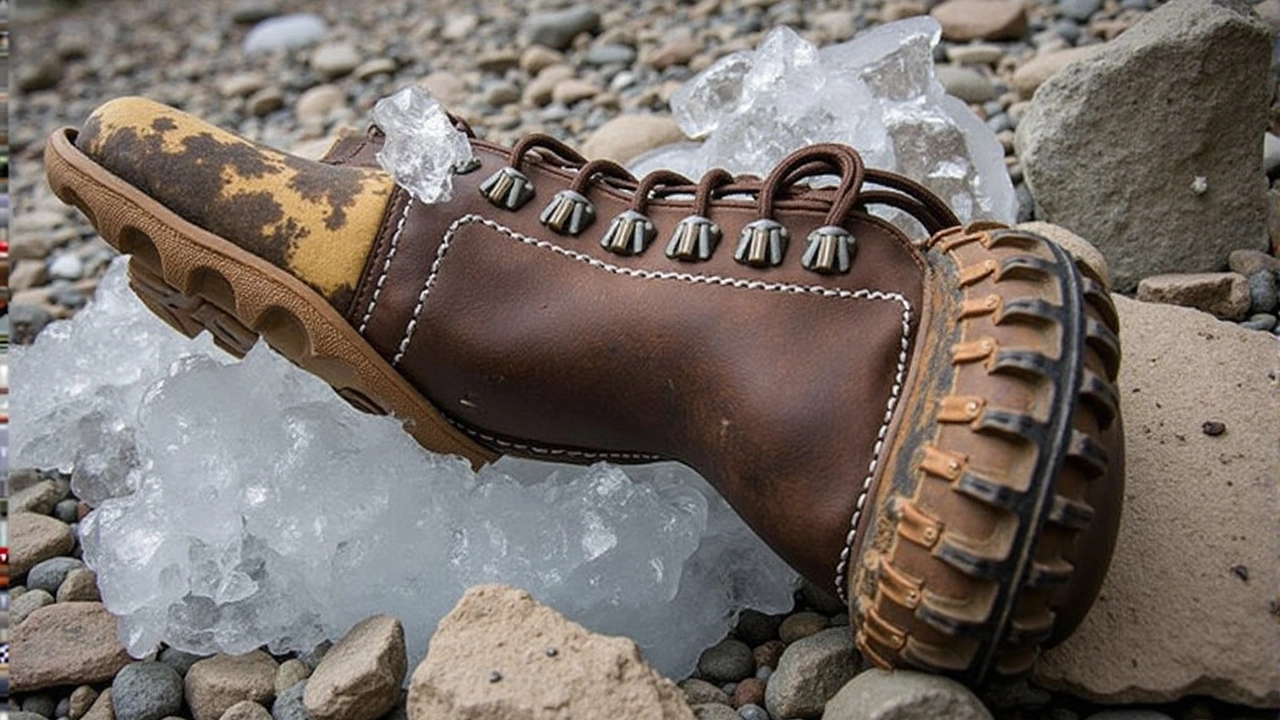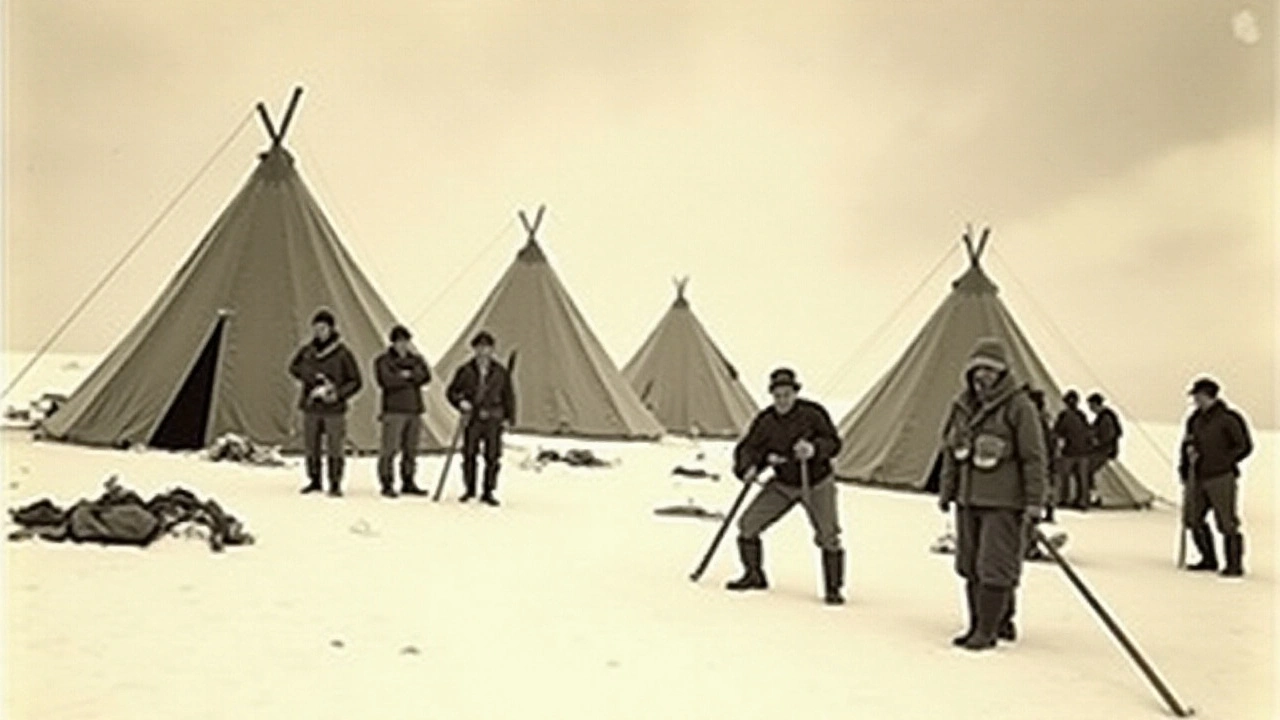The Enigmatic Mystery of Andrew Irvine
For almost a century, the mystery of Andrew Irvine and George Mallory has captivated historians, mountaineers, and enthusiasts alike. These two legendary climbers embarked on a journey to conquer Mount Everest in 1924, a feat as audacious as it was perilous. They disappeared without a trace, leaving behind only a legacy of courage and determination. Their disappearance sparked endless debates and theories, ranging from possibilities of their ascent being successful, to the cruel realities faced by climbers in such unforgiving environments.
The Remarkable Find
Recently, a documentary team led by the skilled photographer and director Jimmy Chin, whose expertise in capturing the world's most breathtaking climbs and stories precedes him, stumbled upon something extraordinary. On the Central Rongbuk Glacier, beneath the formidable north face of Mount Everest, they discovered a boot with a human foot and sock still intact. This seemingly morbid discovery, however, bore a name that has long intrigued and inspired: 'A.C. IRVINE' was stitched onto the boot, a likely attribution to Andrew Irvine himself. This name, embroidered in the most unexpected of places, could serve as a significant puzzle piece in solving one of the greatest mysteries in mountaineering history.
Implications of the Discovery
For Irvine's family and the world, this discovery holds the potential to reach into the past and illuminate the fateful day Irvine and Mallory undertook their historic climb. Irvine's great-niece, Julie Summers, expressed a profound emotional response to the news, her voice heavy with the mixed emotions that accompany such discoveries—relief, sadness, and the rekindled joy of connection to a family member's legacy. DNA sampling was promptly done to ascertain the identity officially, a decision that nods to modern science's ability to bridge historical gaps.
Such discoveries often bring more than closure; they may rewrite history. If verified, this evidence could suggest that Irvine and Mallory achieved the summit of Everest in 1924, altering the narrative that credits Edmund Hillary and Tenzing Norgay in 1953 as the first successful climbers. Although history is often written in stone, moments like these bear the power to etch new chapters into its enduring narrative.
Challenges of Modern Expeditions
As exhilarating as this discovery is, it also underscores the inherent dangers faced by climbers both past and present. Over 300 climbers have perished on Everest since the initiation of expeditions in the 1920s. These mountains, with their majestic summits and treacherous slopes, yield harsh realities alongside divine beauty. The perils faced by Irvine and Mallory back then are much the same that climbers confront today: punishing weather, treacherous terrains, and the omnipresent specter of altitude sickness.
Moreover, this find shines a light on the broader environmental issue of climate change. The impacts are felt even in the remote altitudes of Mount Everest, where the thinning ice is unearthing remnants of the past. This ongoing climate shift could potentially expose even more historical artifacts and human remains, bringing to the surface stories long hidden by the silent drifts of snow and ice.
The Role of Technology and Permissions
It was not just serendipity that led Chin's team to this momentous discovery. They also had the forethought of obtaining permission from the China-Tibet Mountaineering Association to relocate the boot, ensuring the preservation of the evidence and the dignity of the individual. Navigating the logistical and ethical challenges of such a find requires coordination with local authorities and understanding the cultural and historical significance. Chronologically, the importance of respecting these elements is as vital as the discovery itself, and such cooperation may pave the way for future archaeological and mountaineering endeavors.

The Broader Historical Impact
As enthusiasts and historians await conclusive DNA results, the fascination with Irvine and Mallory's legend continues to grow, illuminating both human resilience and the untethered allure of exploration. In light of this potential breakthrough, one considers not just the historical implications but also the broader narrative of human aspiration and the relentless pursuit to conquer nature's tallest challenges. These endeavors have always been as much about self-discovery as about physical achievement, and the story of Irvine and Mallory had already made its mark on this continuum long before the latest evidence surfaced. As new information emerges, the possibility of their success only serves to deepen an appreciation for their indomitable spirit.
With ongoing advancements in mountaineering gears and techniques alongside increased understanding of the mountain's ecosystems, contemporary climbers are better equipped to face Everest's challenges. However, it's the persistent human spirit, much like that of Irvine and Mallory, which remains timeless. This discovery serves as a solemn reminder of the unknown secrets the mountain still holds and the stories waiting patiently beneath layers of history. For now, as the snow slowly yields to higher temperatures, so too does it shed light on the enduring mysteries of those who dared to venture where few had dared to tread.

